Knowledge
Quick Tips For Bigger Arms
Articles, Muscle gain
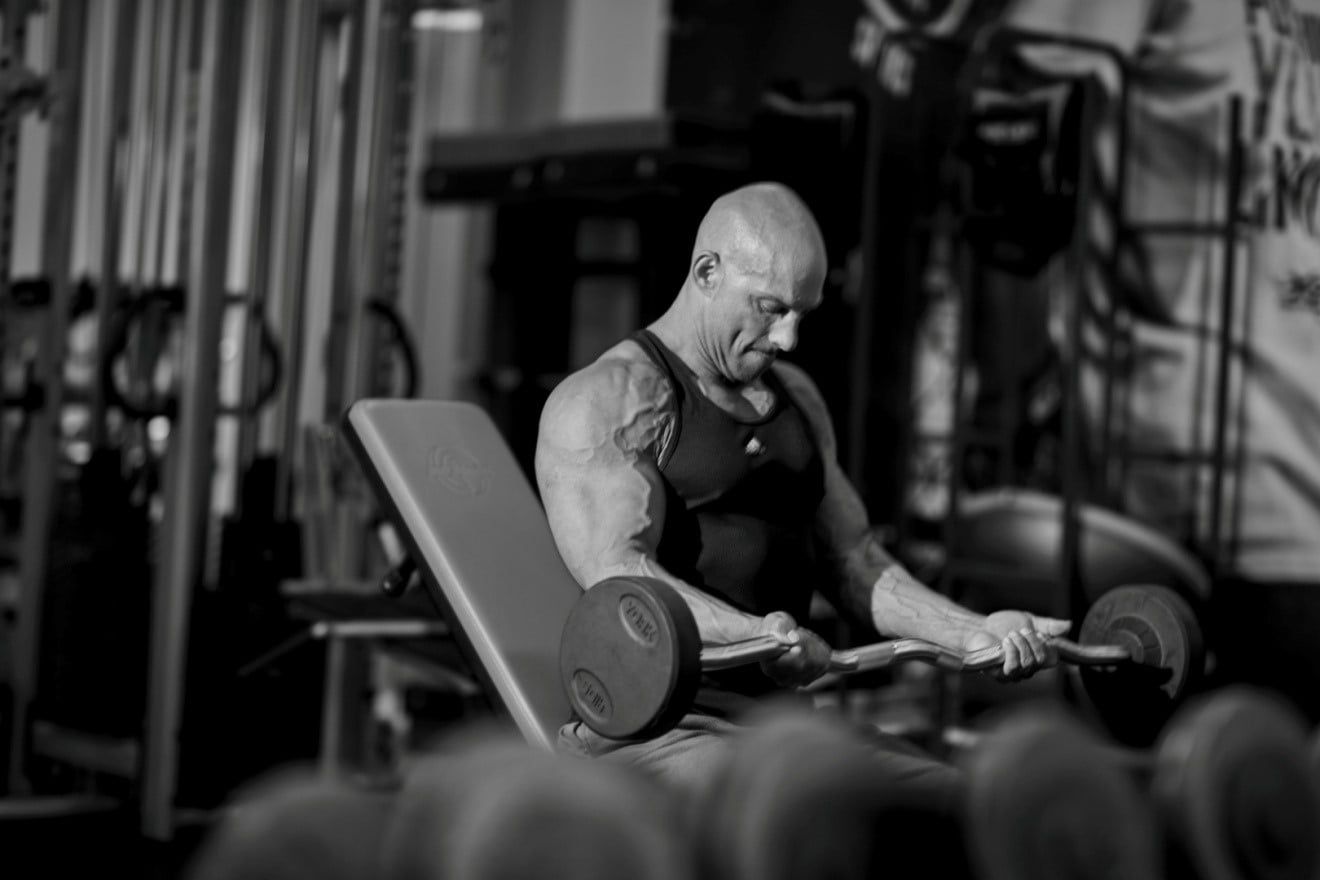
Quick Tips For Bigger Arms
We all want quick tips for bigger arms because very few of us are satisfied with the size of our arms. Getting bigger arms is an obsession for most male (as well as more and more female) trainees. I would say that the three most popular training goals I’ve seen are: 1) getting bigger arms 2) bench pressing more weight and 3) having a 6-pack. I will address the first one. Here are a few arm training tips that you can use to stimulate new arm growth or to fix lagging biceps or triceps.
Train The Brachialis Before The Biceps
I learned this one from John Meadows. Few people actively try to develop their brachialis when training the arm flexors, and it’s too bad because a well-developed brachialis will give a thicker look and might even help you build more of a peak to your arm. Those few who do include direct work for the brachialis normally simply add some hammer curls at the tail end of their biceps workout. This causes several problems when it comes to the brachialis:
- You are trying to target the brachialis when your biceps are fully pumped. If you have decently big arms this can be a problem because you will not be able to “bend” your arm as much when the biceps is maximally pumped. This is made even worse if you were super setting biceps and triceps. If you can’t flex your arm fully when doing hammer curls, you will significantly decrease the work done by the brachialis and will shift more of the workload on the brachioradialis/forearm.
- If you have neglected your brachialis in relation to your biceps in the past, training it at the end of the workout when you are tired (physically and neurologically) is not a good idea. Normally, you want to train your weaknesses earlier in the workout. The main reason is more neurological than physical: a fresher nervous system will have an easier time recruiting more muscle fibers (because it can send a stronger neural drive). In many cases, a lagging muscle is trailing behind because you have a harder time recruiting the high threshold muscle fibres, so don’t make it harder on yourself by hitting that muscle when the nervous system will have an even harder time getting the high threshold fibres into play.
- If you fatigue the biceps (and other arm flexors to some degree) before targeting the brachialis, you will not be able to use as much weight and will have a harder time overloading that muscle; which will make it even harder to recruit a lot of fibres. YES, you can stimulate just as many fibres and stimulate hypertrophy with a lightweight versus a heavyweight if you go to failure BUT, if you did tons of biceps work before doing your brachialis work, the biceps, which are already pre-fatigued, will fail before the brachialis. Meaning that even though you hit failure in the exercise, your brachialis itself will not hit failure, and as a result, you will not have stimulated as many fibres as you could.
The neutral grip (the grip that you use to target the brachialis) is the strongest of the three main grips (neutral is stronger than supinated which is stronger than pronated) when curling. It is normally recommended that you start with the stronger movements in a workout. This is another reason why starting with the brachialis makes sense.
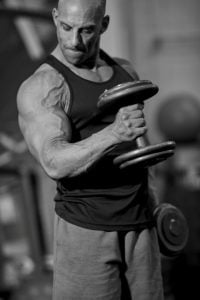
And it will even make the subsequent biceps exercises more effective: since the brachialis will be more fatigued, you will rely even more on the biceps when doing supinated curls.
Slower For Brachialis, Faster For Biceps
Another reason why few people a well-developed brachialis is that it responds better to slower tempos, especially in the eccentric (lowering phase). In fact, to better target the brachialis you should squeeze for 1-2 seconds at the peak contraction position and lower the weight slowly. Most people use too much weight for curls and as a result, they have to use cheating or momentum to get the weight up and they rarely control it on the way down, let alone use a slow speed.
This means that it will be even harder to stimulate the brachialis to grow. While it’s fine to try to accelerate the weight on the way up (without cheating) and lowering it fairly fast (but still under control) when targeting the biceps, if you want to target the brachialis you should focus on flexing the muscles on the way up and lowering slowly. You don’t have to go slow on the way up, but don’t accelerate too much either, think about flexing against the weight.
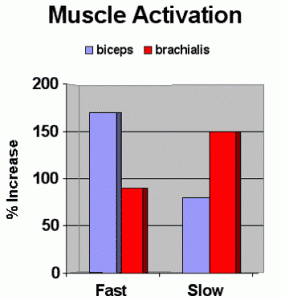
Growth Factor Accumulation For Biceps
I find biceps/arm flexors to respond better to longer sets where you accumulate a lot of metabolites (lactate and hydrogen ions) which stimulate the release of local growth factors. While I prefer to train the triceps heavy, biceps respond better to sets where the muscle is kept under tension for 40-60 seconds.
This is best achieved using a constant tension repetition style. Simply put, you should never stop flexing your biceps at any point in the set. I also recommend avoiding positions where muscle tension is reduced, which is why when doing a growth factor set for biceps I like to shorten the range of motion by taking out the first and last 10% of the range of motion (so don’t fully extend on the way down and don’t reach full flexion on the way up). Note that I use this shortened range of motion only when doing constant tension, growth factors accumulation sets.
The way you reach that 40-60 seconds under load is not that important, but I prefer methods where you don’t use much intra-set rest. Resting (for example rest/pauses) will allow for the clearance of some of the lactate and the entry of oxygen into the muscles, which will reduce growth factors release. As such, I like to use things like full reps + partials (doing full reps to failure than doing as many partial reps as possible) or full reps + isometric hold (doing full reps to failure then holding a certain position for as long as possible while flexing the biceps). I also like mechanical drop sets: using three different variations of the exercise and doing them without rest, going from the weaker to the stronger. For example, reverse dumbbell curl + supinated DB curl + hammer curl. You would use the same weight for all three, go to failure every time and don’t set the dumbbells down, it’s one set. Drop sets would also work, but only if you can decrease the weight really rapidly to avoid having too much rest time.
Contrast Drop Sets For Triceps
Triceps respond well to heavier work but also need to be pumped up to grow maximally. One technique I like to use is the contrast drop set. This is very simple: start the triceps exercise with a heavyweight; something you can lift for 4-6 reps in good form. When you hit failure, you decrease the weight significantly (by up to 50%) and do slow and squeeze reps to failure.
This approach will allow for more thorough fibre fatigue and muscle stimulation. The heavy work also has the benefit of potentiating the nervous systems and as such, you will be able to better contract the triceps and recruit more fibres on the lighter portion.
I prefer to use this method on isolated exercises like pushdowns or lying DB/bar extensions. It can be used on big lifts like a close-grip bench press or dips, but I find that the residual fatigue from set to set is more important than with isolated exercises. As such, it’s hard to do more than 1-2 such sets on compound movements without having to decrease the weight by a lot, while you can easily do 3-4 on isolated exercises without much of a drop.
Peak & Stretch Superset For Biceps
One method I really like for rapid biceps growth is to superset one peak contraction exercise using the constant tension method and one exercise where the biceps is placed in a stretched position.
Here is an example:
A1. Peaking curl
8-10 reps
Holding peak contraction 2 seconds while you go from neutral to supinated grip
Eccentric in 4 seconds
Minimal rest then…
A2. Incline drag curls
8-10 reps
At the end of the set you can even hold the stretched position for 15-20 seconds.
You would do 3-4 sets.
The contracted movement using a constant tension technique will maximize the pump and accumulation of local growth factor. The stretched exercise will increase IGF-1 receptor sensitivity and maximize mTor activation.
Of course, you can use different exercises. For the peak contraction exercise, you could use a preacher curl, lap curl, machine curl, cable curl, etc. For the stretch exercise, you should stick with variations of the incline curl.
Post Fatigue Loaded Stretching
Speaking of stretch stimulation, if you have read my article on loaded stretching you know that it can be a powerful tool to stimulate muscle growth. It does so via several mechanisms:
- Maximizing mTor (the signal that starts protein synthesis/muscle building)
- Increasing the release of local growth factor if the loaded stretch is held long enough to lead to a hypoxic state and an accumulation of lactate (40-70 seconds or so)
- Increasing the sensitivity of the IGF-1 receptors (IGF-1 is the most anabolic hormone in the body and if you are more sensitive to it, you will build more muscle).
For that reason, I like to finish off a body part with some loaded stretching. I like to shoot for 2-3 minutes under load. You won’t be able to do that all in one set because you should use a decent weight. You will need 3 to 6 mini-sets to get to 2-3 minutes but try to take only very short breaks between bouts of loaded stretching; 10-15 seconds at the most otherwise you will lose the growth factor releasing benefits.
For the biceps, you can hold the lying Maltese position with KBs or DBs:
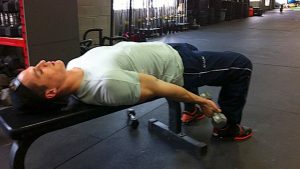
As fatigue sets in, the arms will go down lower and lower but still try to keep the biceps tensed.
You can also hold the stretched position of an incline dumbbell curl.
For the triceps, you can use the lying DB extension stretch:
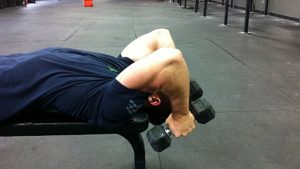
Bend the elbows as much as possible, then try to bring the elbows as far down as you can, without opening the elbows up. As you get fatigued you will also move lower and lower, that’s fine and desired, but still fight to keep the position.
Conclusion
While getting bigger arms is not as glorious of a goal as improving performance, being healthier or squatting more weight, it remains one of the primary objectives of a vast majority of trainees… not all of them will admit it, but none of them would say no to bigger arms! Hopefully, this article will have helped you find a few new ways to get ready for the gun show!
-CT